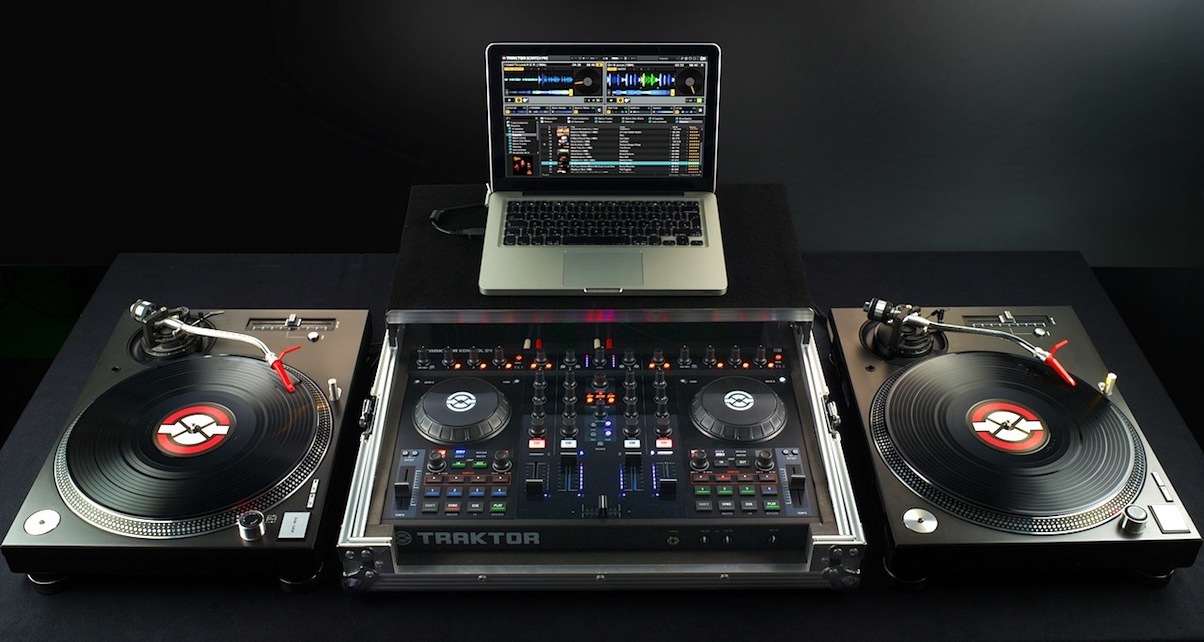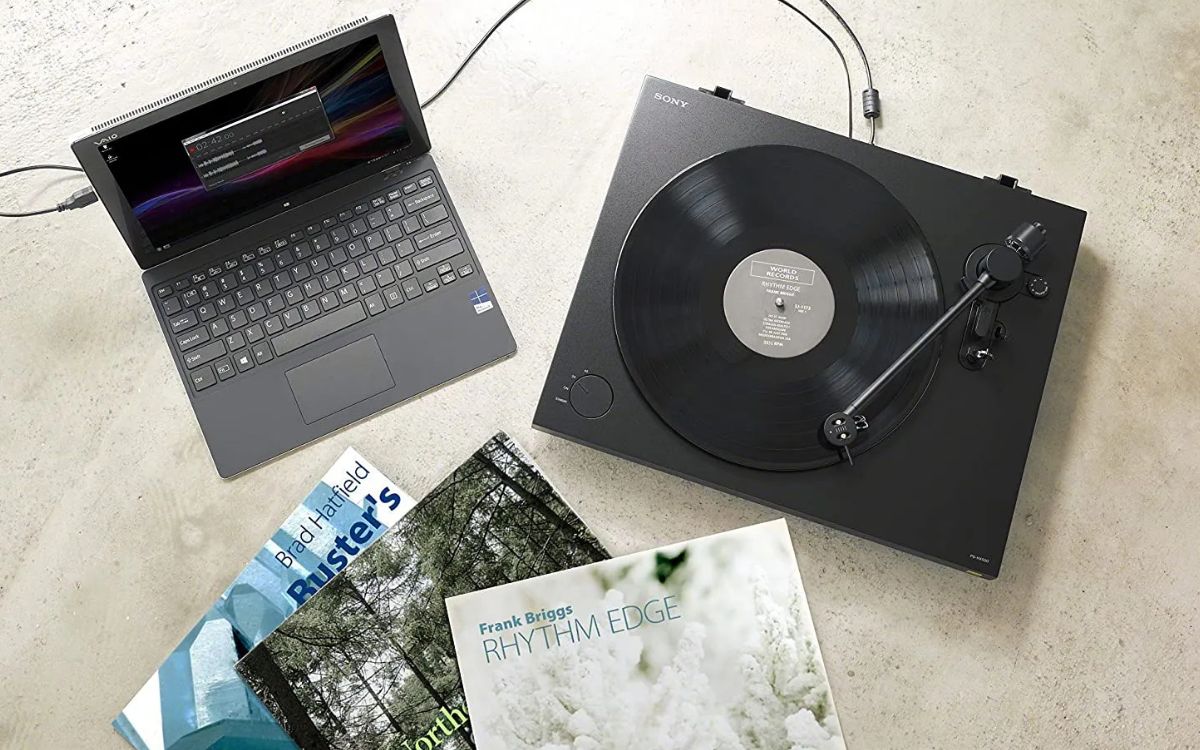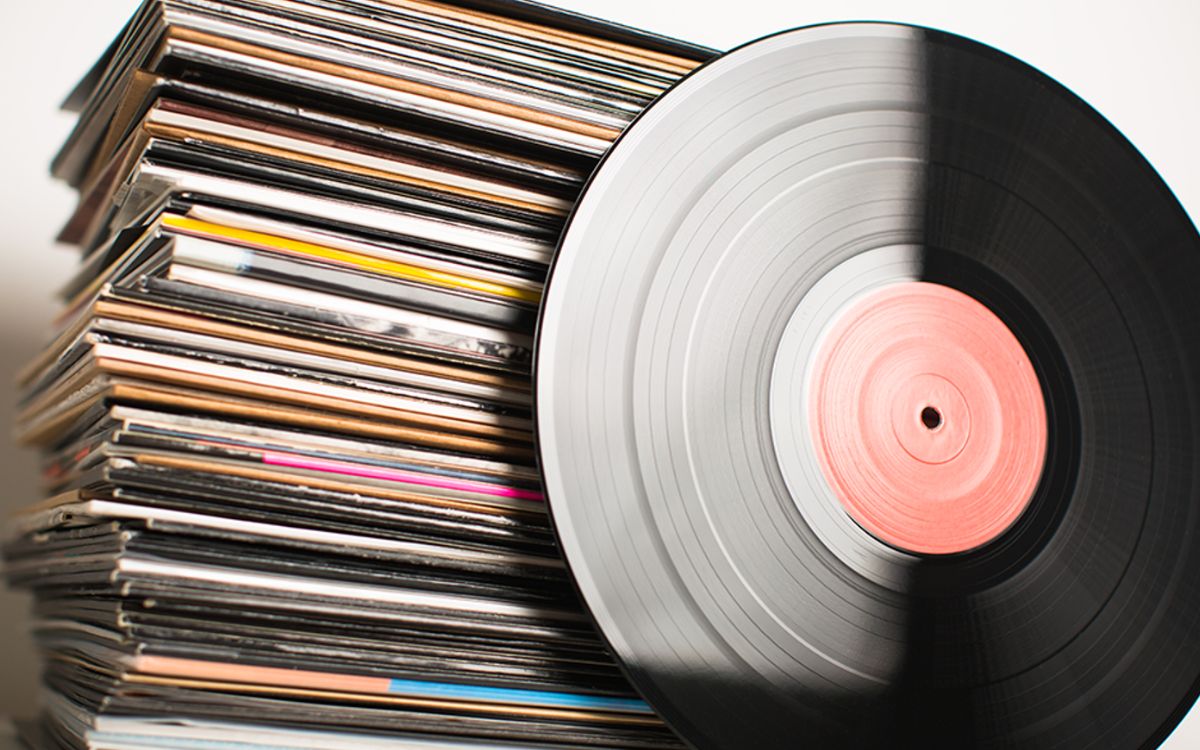Home>Production & Technology>Vinyl>How To Get My Music On Vinyl


Vinyl
How To Get My Music On Vinyl
Modified: March 10, 2024
Learn how to get your music on vinyl and make your music collection truly timeless. Discover the process and benefits of releasing your music on vinyl.
(Many of the links in this article redirect to a specific reviewed product. Your purchase of these products through affiliate links helps to generate commission for AudioLover.com, at no extra cost. Learn more)
Table of Contents
Introduction
Welcome to the world of vinyl records! In an age dominated by digital music consumption, vinyl records have experienced a remarkable resurgence in popularity. The analog warmth, the crackle of the needle, and the tactile experience of handling vinyl make it an irreplaceable medium for music enthusiasts.
If you’re an artist or band looking to release your music on vinyl, you’ve come to the right place. Getting your music on vinyl can be an exciting and rewarding endeavor, allowing you to connect with your audience in a tangible and nostalgic way. In this article, we will guide you through the process of getting your music pressed on vinyl, from understanding the intricacies of vinyl records to marketing and distribution.
Before we dive into the details, it’s important to note that producing vinyl records requires careful planning and an understanding of the medium’s unique characteristics. While vinyl offers an incomparable audio experience, it also imposes limitations and considerations that differ from digital formats. By following the steps outlined in this article, you can ensure that your vinyl release meets the highest standards of quality and appeals to vinyl collectors and enthusiasts.
Understanding Vinyl Records
Vinyl records have a rich history that dates back to the late 1800s. The medium reached its peak in popularity during the mid-20th century, and despite facing competition from various formats over the years, vinyl has managed to maintain its allure and charm.
So, what exactly makes vinyl special? Vinyl records are an analog format that reproduces sound through physical grooves engraved on the surface of a rotating disc. These grooves represent the audio waveform and are read by a stylus (needle), which translates the vibrations into audible sound.
One of the main attractions of vinyl is its unique sound characteristics. Many audiophiles and music lovers appreciate the warmth, depth, and richness of vinyl sound. The analog nature of vinyl creates a sense of authenticity and presence that often eludes digital formats.
In addition to the audio quality, vinyl records offer a tangible and tactile experience that digital music lacks. Holding a vinyl album, carefully placing it on a turntable, and gently lowering the needle is a ritual that connects the listener with the music in a way that cannot be replicated by simply clicking a button on a digital music player.
It’s important to note that vinyl records also have their limitations. The physical nature of vinyl means that it is susceptible to wear and tear over time. Scratches, warps, and dust can affect the sound quality and playability of a vinyl record. Additionally, the playback time of a vinyl record is limited compared to digital formats, often requiring multiple records or shorter track durations.
Understanding the unique characteristics of vinyl is crucial when preparing your music for a vinyl release. You’ll need to take into account factors such as track order, record length, and overall sound quality to ensure an optimal listening experience for your audience.
Preparing Your Music for Vinyl
When preparing your music for a vinyl release, there are several important considerations to keep in mind. These steps will help ensure that your music sounds its best on the vinyl format.
First and foremost, it’s essential to have a high-quality master of your music. This involves working with a skilled audio engineer who specializes in vinyl mastering. Vinyl mastering differs from digital mastering, as it requires adjustments to the frequency response, dynamic range, and overall tonal balance to account for the limitations and characteristics of the vinyl medium. A properly mastered vinyl record will optimize the sound quality and minimize any potential issues like distortion or excessive surface noise.
The length of your vinyl record is another important factor to consider. Vinyl records have limited playback time per side, typically around 18-22 minutes for a 12-inch LP. If your album or EP exceeds this time limit, you may need to consider a double LP or editing down the tracklist. Keep in mind that overcrowded grooves can result in a decrease in sound quality and the risk of skipping.
The order of your tracks also plays a role in the vinyl listening experience. Vinyl records often have a distinct A-side and B-side, with a natural break in the middle. Consider the flow and cohesion of the tracks when arranging them on the vinyl. You may want to place stronger, more attention-grabbing songs at the beginning and end of each side, with more subdued tracks in the middle.
It’s important to note that vinyl has limitations when it comes to reproducing certain frequencies. Extremely low bass frequencies and very high frequencies may suffer in comparison to digital formats. It’s a good idea to listen to your music on different sound systems, including various turntables and speakers, to ensure that your mix translates well to vinyl.
Careful consideration should also be given to the dynamic range of your music. Vinyl records have a limited dynamic range compared to digital formats. Excessive volume compression or limiting can result in a loss of detail and dynamic impact on vinyl. Strike a balance between loudness and dynamic range to ensure a pleasing listening experience.
By paying attention to these factors and working with professionals who understand the intricacies of vinyl, you can ensure that your music is properly prepared and optimized for the vinyl format.
Choosing a Vinyl Pressing Plant
Once your music is prepared for vinyl, the next step is to choose a vinyl pressing plant to handle the manufacturing process. Selecting the right pressing plant is crucial to ensure the quality and timely delivery of your vinyl records.
When choosing a pressing plant, there are several factors to consider. Firstly, you’ll want to look for a plant with a good reputation and a track record of delivering high-quality vinyl records. Reading reviews and seeking recommendations from other artists or labels can help you make an informed decision.
Another important consideration is the plant’s production capacity. Determine how many units you’ll need and ensure that the pressing plant can handle your order within your desired timeframe. Keep in mind that production times can vary significantly, especially during peak seasons when many artists and labels are releasing vinyl.
Quality control is vital when it comes to vinyl manufacturing. Look for a pressing plant that has a rigorous quality control process in place to minimize defects such as off-center labels, non-fill (missing vinyl in the grooves), or pressing imperfections. Ask for samples or examples of their previous work to assess the overall quality of their pressing.
Cost is also a factor to consider. Different pressing plants may offer varying pricing structures, so it’s important to get quotes from multiple plants to compare prices. However, keep in mind that the cheapest option may not always provide the best quality. Balancing cost with quality is key to ensuring a successful vinyl release.
Additionally, consider the plant’s ability to handle special requests or customizations. If you have specific packaging requirements, color vinyl, or other unique features, make sure the pressing plant can accommodate your needs.
Communication and customer service are critical throughout the manufacturing process. Choose a pressing plant that is responsive, attentive to detail, and keeps you informed on the progress of your order. Good communication will help address any concerns or issues that may arise during production.
Ultimately, selecting the right vinyl pressing plant is a crucial step in bringing your music to life on vinyl. Take the time to research and consider your options, weighing factors such as reputation, production capacity, quality control, cost, customizations, and communication. By choosing a reliable and capable pressing plant, you’ll be one step closer to having your music in the hands of vinyl enthusiasts.
Artwork and Packaging
When it comes to vinyl records, the artwork and packaging play a significant role in capturing the attention of potential buyers and enhancing the overall aesthetic appeal of your release. Thoughtful and visually appealing packaging can make your vinyl record stand out and leave a lasting impression on fans and collectors.
The album cover is the first thing that catches the eye, so it’s essential to invest time and effort into creating a compelling and visually striking design. The artwork should reflect the overall theme or concept of your music, conveying the mood and style of the album. Consider collaborating with a talented graphic designer or illustrator to bring your vision to life.
Beyond the album cover, the packaging includes elements such as the sleeve, inner sleeves, and any additional inserts. The sleeve serves to protect the vinyl record and often provides space for additional artwork, lyrics, or liner notes. Inner sleeves, typically made of paper or poly-lined, further protect the record and can feature additional artwork or information.
Consider the materials and printing techniques used for the packaging. The choice of materials can affect the visual and tactile experience. Some artists and labels opt for traditional cardboard sleeves, while others explore alternative materials like gatefold jackets or special edition box sets.
Pay attention to the printing quality and finish of the packaging. Vibrant colors, sharp images, and high-quality printing can elevate the overall presentation and perception of your vinyl release. Various printing techniques, such as embossing, spot gloss, or foil stamping, can add a special touch and make your artwork truly unique.
Make sure to include any necessary information on the packaging, such as track listing, credits, and contact details. Double-check the spelling and accuracy of all text to avoid any mistakes or omissions.
Consider the practicality of the packaging as well. Ensure that the vinyl record and any additional items fit securely and protectively. It’s also important to strike a balance between aesthetics and functionality, ensuring that the packaging is not overly cumbersome or difficult for consumers to handle.
Remember, the artwork and packaging of your vinyl record contribute to the overall value and desirability of the product. Take the time to carefully plan and create visually appealing and well-crafted designs that align with your music and appeal to your target audience.
Creating a Vinyl Master
Creating a vinyl master is a crucial step in the process of getting your music pressed onto vinyl. The vinyl master is the final audio source that will be used for cutting the grooves into the vinyl disc. It’s important to follow specific guidelines and considerations to ensure a high-quality and accurate representation of your music.
The first step in creating a vinyl master is to provide a high-resolution audio file of your music. Typically, a 24-bit WAV or AIFF file with a sample rate of 44.1 kHz is the standard format for vinyl mastering. This ensures that your music contains all the necessary detail and dynamic range for optimal sound quality on vinyl.
Working with a skilled mastering engineer who specializes in vinyl is essential. The mastering engineer will carefully fine-tune the audio to ensure it translates well to the vinyl medium. They will address any potential issues, such as excessive low-end or high-end frequencies and adjust the overall tonal balance to optimize the sound for vinyl playback.
The mastering engineer will also apply any necessary volume adjustments and create proper spacing between tracks. This is important to avoid any distortion or interference during playback and to ensure smooth transitions between songs.
Another important consideration in vinyl mastering is the use of proper playback equalization (EQ) settings. Vinyl records use specific EQ curves, such as the RIAA curve, to compensate for the limitations of the format. The mastering engineer will apply these EQ settings during the mastering process, ensuring that your music sounds its best when played on vinyl.
Once the audio mastering is complete, the next step is to cut the grooves into the lacquer or metal master disc. This process is performed by a mastering engineer using a specialized cutting lathe. The engineer carefully translates the audio signal into physical grooves, taking into account the intricacies of the vinyl format.
During the cutting process, it’s important to communicate with the mastering engineer regarding any specific requirements you may have, such as track order, fades, or any special audio effects. Providing clear instructions will help ensure that the vinyl master accurately represents your artistic intent.
After the cutting process is complete, the lacquer or metal master disc is used for the manufacturing of vinyl records. The manufacturer will create a stamper from the master, which is then used to press the grooves into the vinyl discs.
Creating a vinyl master requires careful attention to detail and working with professionals who understand the intricacies of vinyl production. By following these steps and working with a skilled mastering engineer, you can ensure that your music is properly formatted for vinyl and achieves the best possible sound quality.
Vinyl Manufacturing Process
The vinyl manufacturing process involves several steps to transform your music from a vinyl master into a physical vinyl record that can be played on a turntable. Understanding this process is important to ensure a smooth and successful vinyl production.
Once the lacquer or metal master disc is created, the next step is to generate a stamper, which will be used to press the grooves into the vinyl. The stamper is created by coating the master disc with a thin layer of metal, typically nickel, to form a negative impression of the grooves. This negative impression is then electroplated to form a positive stamper, which will be used in the pressing process.
The vinyl pressing process starts with the preparation of vinyl pellets. These pellets are melted and formed into a puck or biscuit, which is then placed between the two stampers. The puck is pressed at high temperatures, causing the vinyl to flow and take the shape of the grooves in the stamper.
Once the vinyl is pressed, it is cooled and trimmed to remove any excess material. The pressed records are then visually inspected for any defects or imperfections. Quality control is crucial at this stage to ensure that the records meet the highest standards.
The next step involves cleaning and drying the records to remove any residue or contaminants. This ensures that the records are in optimal condition for playback and minimizes any potential surface noise.
After cleaning, the records go through the labeling process. Labels can be either printed directly onto the vinyl or applied as adhesive stickers. The labels include information such as the artist name, album title, tracklist, and any additional artwork or details.
Once the labeling is complete, the records are ready to be packaged. The packaging may include poly-lined inner sleeves, which offer additional protection for the record. The records are then placed in outer sleeves, often made of cardboard or gatefold jackets, which provide further protection and serve as the cover art for the album.
Finally, the packaged records are shrink-wrapped to protect them from dust and damage during transport. They are then boxed up and prepared for distribution and sale.
It’s important to note that the vinyl manufacturing process can have variations and specific requirements depending on the pressing plant and any customizations you may have. Communication with the pressing plant and providing clear instructions are crucial to ensure that your vinyl records are produced to your specifications.
Understanding the vinyl manufacturing process allows you to have a greater appreciation for the craftsmanship and care that goes into creating each vinyl record. Whether you’re a collector or an artist, the vinyl manufacturing process plays a pivotal role in bringing the music to life on this beloved format.
Marketing and Distribution
Once your vinyl records are manufactured and ready for sale, the next crucial step is marketing and distribution. Effective marketing strategies and a well-thought-out distribution plan will help you reach your target audience and maximize the visibility and sales of your vinyl release.
One of the first areas to focus on is online presence. Create a dedicated landing page or website where fans can learn more about your vinyl release. Include high-quality product images, track previews, artist bios, and any additional information that would engage potential buyers. Utilize social media platforms and email newsletters to build hype and share updates with your fan base.
Consider promoting your vinyl release through targeted advertising campaigns. Utilize social media ads, Google Ads, or even sponsored posts on music blogs or websites. Specific targeting options allow you to reach users who are likely to be interested in vinyl records and your music genre.
Collaborate with music bloggers, influencers, and online publications to generate reviews and features about your vinyl release. Getting your music covered by reputable sources can greatly increase awareness and exposure. Offer promotional copies to journalists, DJs, and radio stations to further amplify your reach.
Explore offline marketing strategies as well. For example, consider hosting album release parties or live performances at local record stores. These events create opportunities for fans to discover your vinyl and connect with you as an artist. Additionally, consider selling your vinyl at concerts, music festivals, or other live events to directly engage with your audience.
Distribution is another crucial aspect of getting your vinyl records into the hands of fans. Research and establish relationships with distributors and record stores that specialize in vinyl. Utilize online record marketplaces and platforms, such as Bandcamp or Discogs, to sell directly to fans and collectors. These platforms provide global reach and often have built-in fan communities that can help promote your vinyl release.
Consider offering special edition vinyl variants or limited-edition releases to create a sense of exclusivity and increase demand. This can include colored vinyl, deluxe packaging, or even autographed copies. These special editions can create excitement and drive sales among collectors and fans looking for unique pieces to add to their collections.
Don’t forget the importance of engaging with your customers and fans. Encourage them to share their vinyl purchases on social media, and consider running promotions or giveaways to incentivize sharing and word-of-mouth marketing. Engaging with your audience fosters a strong community and can lead to ongoing support for future vinyl releases.
Tracking your sales and marketing efforts is crucial to measure success and refine your strategies. Keep an eye on analytics, track sales through different channels, and gather customer feedback to continually optimize your marketing and distribution approaches.
By effectively marketing your vinyl release and implementing a smart distribution strategy, you can reach a wider audience, increase sales, and establish a lasting connection with your fans and vinyl enthusiasts.
Conclusion
Releasing your music on vinyl is an exciting journey that allows you to connect with your audience in a unique and nostalgic way. From understanding the nuances of vinyl records to navigating the manufacturing process, each step requires careful consideration and attention to detail.
Understanding the characteristics of vinyl records, such as the warm sound and tactile experience, is essential in preparing your music for vinyl. Working with a skilled mastering engineer ensures that your music is optimized for the format, while carefully considering track order and overall sound quality.
Choosing the right vinyl pressing plant is crucial to ensure the quality and timely delivery of your vinyl records. Seeking recommendations, assessing production capacity, and evaluating quality control measures are all important factors in making an informed decision.
Artwork and packaging play a significant role in capturing attention and enhancing the visual appeal of your vinyl release. Attention to detail, high-quality printing, and thoughtful packaging materials can make your vinyl album stand out in a competitive market.
Creating a vinyl master requires collaboration with a skilled mastering engineer who understands the unique requirements of the format. By following proper guidelines and ensuring clear communication, you can achieve the best possible sound quality on vinyl.
The vinyl manufacturing process turns your music into a physical artifact. From creating stampers to pressing and packaging, each step contributes to the creation of a quality vinyl record that can be enjoyed by fans and collectors.
Marketing and distribution are key to getting your vinyl records into the hands of your target audience. Online promotion through social media, collaborations with influencers, and effective offline strategies help generate buzz and reach potential buyers. Partnering with distributors, selling through online platforms, and engaging with your fanbase can ensure wider accessibility and visibility for your vinyl release.
In conclusion, releasing your music on vinyl is a rewarding experience that allows you to connect with your audience in a unique way. By understanding the intricacies of vinyl, working with industry professionals, and implementing effective marketing and distribution strategies, you can create a memorable and successful vinyl release that resonates with fans and stands the test of time.











